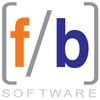IT industry watchers expect tech budgets in 2022 to return to pre-pandemic levels and beyond as companies continue to fast-track digital transformation projects.
“Firms are embracing the pivot to new business models to ensure both continued industry relevance, competitive differentiation and innovation in the years ahead,” says the CompTIA “IT Industry Outlook 2022”. “There’s no doubt some firms took a hit in the last couple of years, and we can’t discount still-looming concerns related to the global economy, the pandemic, and the state of public affairs. And yet, 2022 is shaping up to be a year of not just recovery, but of acceleration and innovation.”
When it comes to spending those tech dollars in today’s digital-first world there is more choice than ever with CompTIA estimating that there are more than a half million software and IT service companies in the U.S. alone.
And that number keeps growing, with more than 40,000 new companies entering an industry that CompTIA says is becoming “more complex and changing rapidly at both the technology and business levels.”
What Makes a Software Company Successful?
There are many perfectly fine products and services that simply fail to find their marketplace in the crowded IT sector, which begs the question:
“What makes a software company successful?”
At FreshByte Software we might argue that it starts by having a company mission of being more than “just a software company.”
FreshByte, for example, is proud to be a customer service organization that specializes in software for the wholesale distribution industry, regardless of what products your company imports, manufactures, processes and/or distributes.
While user experience (UX) is extremely important -- for software to truly work, it must be easy to learn and easy to use -- just targeting UX can lead to problems.
A lot of software companies put maximum effort into the “idea to interface” stage, then drop the ball when it matters most: customer experience (CX).
Good CX can be the differentiator between success and failure with 89 percent of companies surveyed by Gartner considering customer experience to be the new competitive battlefield.
“As products become more commoditized, customers differentiate based on experiences with your company more than specific features and functions,” says Oracle.
Understanding the Difference Between UX and CX
Sometimes we see UX and CX used interchangeably, but they are two distinct areas.
“User Experience – dubbed UX for short – is a hot topic. In the broadest sense, it can be defined as the overall experience you have when you are using or interacting with something – and that ‘something’ could literally be almost anything in the world!” writes Amy Harvey on Usability Geek.
UX often comes to mind when we use tech products such as smartphones, websites, and yes, software.
UX is focused on all aspects of the end-user’s interactions with your services and products, including such things as:
- Interaction design
- Information architecture
- Visual design
- Functionality
- Usability
- Typography
- User interface
- Content strategy
Another way to think of UX is to look at the UX honeycomb, a hexagon of seven facets of the user experience, which answer the question is the product or service:
- Useful
- Usable
- Desirable
- Findable
- Accessible
- Credible
- Valuable
CX, on the other hand, encompasses your overall interaction with a customer, which includes UX and more.
“How customers perceive their interactions with your company,” is how Forrester defines CX. “Only your customers can tell you whether they found their experience useful, usable, and enjoyable. And that is totally a function of their perceptions.”
Calling on Usability Geek again, here is an example of CX vs. UX:
A CIO of a company may be the person approving a new application to be used by frontline employees throughout the company. He/She is the customer, and they are the users. For the CIO to sign off on the deal, an excellent customer experience is needed, and for the frontline employees to enjoy the application, a good user experience is required.
The payoff? Forrester says that customers are willing to pay 4.5 times more if the CX is excellent.
Putting the Customer in Customer Experience
It is important to put the customer in the customer experience.
FreshByte has found that it is important to support customers, not only with implementation help, but also with constant technology updates and with diligent customer service.
“The software is always evolving and updating takes one minute on average. Response time to questions is quick including updating in the next upgrade, if necessary,” says one FreshByte customer.
CX at FreshByte is focused on every step of implementation and the important steps after with:
- 24/7 support
- Weekly online webinars
- Hands-on training
- Customer portal with live help available
Contact FreshByte today to learn more about how we can help make your customers successful.





